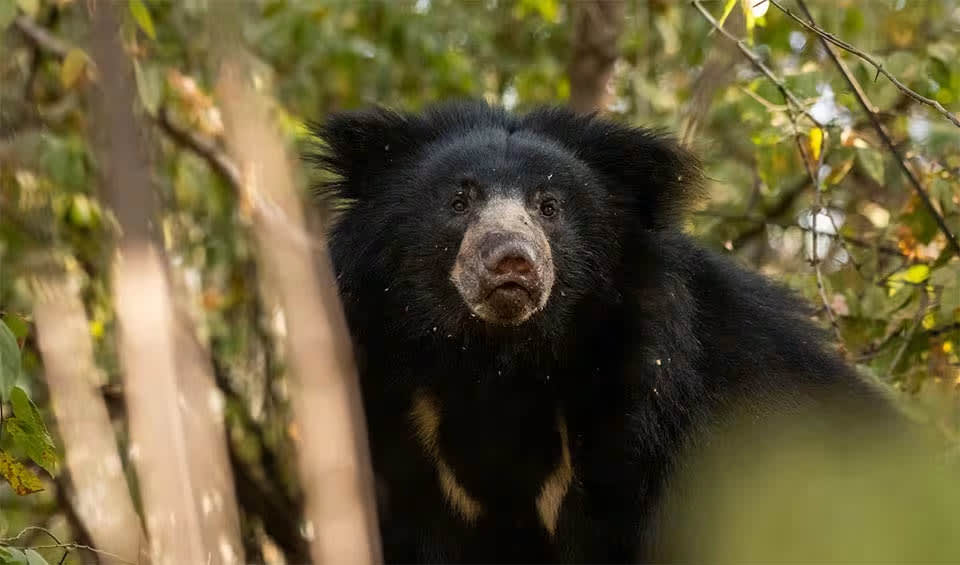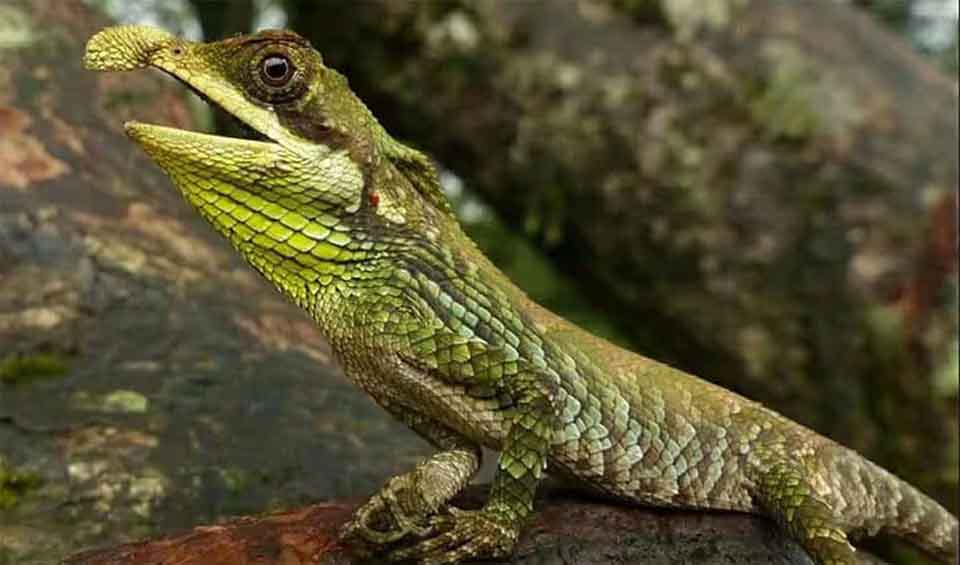Sri Lanka, an island nation, boasts remarkable biological diversity and stands out as one of the richest countries in Asia in terms of species concentration. Its varied ecological, climatic, soil, and topographical conditions create favorable habitats for diverse flora and fauna across the country. This richness is further highlighted by significant levels of endemism, encompassing numerous historical relics and distinct point endemics. Currently, a quarter of the country’s 3,000 angiosperms are unique to Sri Lanka, along with 43% of indigenous vertebrates (excluding marine species), with particularly high rates among amphibians, freshwater fishes, and reptiles.
Despite its modest size of 6,570,134 hectares (65,701.34 km²), Sri Lanka hosts a wide range of ecosystems, from forests to agricultural lands, aquatic environments, and marine habitats. Various climatic zones support specific forest types, including rainforests, mountain cloud forests, monsoon forests in the dry zone, and arid thorn scrub forests. With a coastline spanning 1,620 kilometers (1,007 miles), the country boasts rich marine and coastal biodiversity, featuring 208 species of hard coral and 756 species of marine mollusks.
Four pillars elaborated:
Throughout the country, several national parks safeguard vital habitats and wildlife. Notably, Yala National Park, the nation’s most renowned, encompasses light forests, grassy plains, and brackish lagoons, providing sanctuary for elephants, crocodiles, buffaloes, and monkeys. Uda Walawe National Park is home to elephants, wild buffalo, sambar, spotted deer, and giant squirrels, easily observable due to the sparse vegetation. Pigeon Island National Park, located just offshore, boasts powdery white sands and shimmering coral gardens. Land Management
Land Management
In the heart of the island’s wet zone lies Sinharaja Forest Reserve, teeming with vibrant plant, bird, and animal life. Along the south coast, Bundala National Park dazzles with its intricate network of waterways, lagoons, and dunes, illuminated by the golden glow of the evening sun, hosting wetlands of immense ecological significance. Lastly, Wasgamuwa National Park, where the project is situated, showcases unparalleled biodiversity among protected areas, renowned for its sizable herds of elephants, purple-faced langur monkeys, wild boar, sambar, spotted deer, buffalo, and the occasional sightings of leopards and sloth bears.
The primary threats encompass habitat loss, fragmentation, and degradation, alongside the overexploitation of biological resources, the decline of traditional crop and livestock varieties, pollution, conflicts between humans and wildlife, the proliferation of invasive alien species, and escalating human population density. Habitat loss arises from land use changes in forests, unregulated reclamation of wetlands, indiscriminate use of coastal areas, and deforestation, which stands as the most severe threat to terrestrial biodiversity, resulting in the loss of approximately 50% of the island’s forest cover in just half a century. Threats to Biodiversity
Threats to Biodiversity
In marine and coastal environments, coral mining for the lime industry has inflicted substantial harm on coral reefs, while additional significant risks include the conversion of coastal habitats, destructive fishing practices, pollution from maritime vessels, and adverse impacts from land-based activities.
Legislation vital for biodiversity conservation in Sri Lanka includes acts like the Forest Ordinance (1907) and the Fauna and Flora Protection Ordinance (1937), complemented by policies such as the National Conservation Strategy (1988) and National Environmental Policy (2003). Implementation is supported by initiatives like the Biodiversity Conservation Action Plan (BCAP), which led to the formation of a dedicated biodiversity unit within the Ministry of Environment and Renewable Energy (MoERE). Capacity and Governance
Capacity and Governance
At the provincial level, biodiversity profiles integrate BCAP into local planning. Central sectoral bodies like the Department of Forest Conservation (FD) and Department of Wildlife Conservation (DWLC) focus on capacity-building for forest and wildlife management, while the Coast Conservation Department oversees coastal resource management.
Sri Lanka’s National Biodiversity Strategic Action Plan (NBSAP) delineates a set of specific goals and objectives. Firstly, it aims to conserve and sustainably manage the country’s diverse ecosystems, species, and genetic resources. Additionally, the plan seeks to promote the sustainable use of biological resources while ensuring fair and equitable sharing of benefits derived from such utilization. Moreover, it strives to integrate biodiversity considerations into national development planning processes across various sectors, ensuring that developmental activities are conducted sustainably. Future Trends
Future Trends
Furthermore, the NBSAP aims to enhance public awareness about the importance of biodiversity conservation and to encourage active public participation in conservation efforts. Additionally, it endeavors to strengthen the capacity of relevant institutions and stakeholders for effective biodiversity conservation and management. Lastly, the plan seeks to establish effective access and benefit-sharing mechanisms to ensure the fair and equitable sharing of benefits arising from the utilization of genetic resources. These comprehensive goals and objectives are designed to guide Sri Lanka’s endeavors in conserving its rich biodiversity and ensuring the sustainable use of natural resources for the benefit of present and future generations.
Biodiversity
Partitioned predominantly between the lush ‘wet’ regions of the south and southwest and the arid ‘dry’ areas of the north and northeast, Sri Lanka showcases an extraordinary biodiversity and offers unparalleled wildlife observation opportunities worldwide. Within these habitats reside an array of species, including the mugger crocodile and saltwater crocodile, vast herds of elephants, majestic blue whales, elusive leopards, playful dolphin pods, a multitude of vibrant bird species, and vibrant coral reefs populated by an array of colorful fish.Interestingly, Sri Lanka is renowned as the sole destination worldwide where one can encounter both the largest terrestrial mammal, the elephant, and the largest marine mammal, the blue whale, within a single day.
In the table below are the number of known species in several main groups, how many of these species are Threatened with extinction, and how many of them are Endemic (unique to Sri Lanka only):
| Species (World rank) |
Threatened | % Threatened | Endemic | % Endemic | |
|---|---|---|---|---|---|
| Mammals | 121 (#94) | 30 | 24.8% | 18 | 14.9% |
| Birds | 376 (#92) | 13 | 3.5% | 30 | 8.0% |
| Reptiles | 252 (#37) | 12 | 4.8% | 144 | 57.1% |
| Amphibians | 110 (#33) | 56 | 50.9% | 98 | 89.1% |
| Fishes | 1,138 (#31) | 113 | 9.9% | 37 | 3.3% |
| Plants | 7,500 (#43) | 297 | 4.0% | 830 | 11.1% |
mammals
Sloth bear
This ant & termite eater is native to the Indian subcontinent with two subspecies
Red slender loris
They cannot jump even short distances. However, they have long limbs that can bridge large gaps between trees
Rusty-spotted cat
Meet the smallest wild cat in Asia but don’t be fooled by its cute looks – this feline is a skilled predator
birds
Black eagle
Controller of arboreal birds and mammals populations in Asia’s tropical forests
Black-backed dwarf kingfisher
One of the most visually stunning kingfisher, often described as a “flying jewel”
Greater coucal
Sometimes mistaken for a crow because of its size and dark coloration
reptiles
Long-nosed whip snake
Their long noses help them climb trees by giving them extra grip on the branches
Leaf-nosed lizard
The “leaf” on the its nose is actually a soft, fleshy projection, not a true leaf or hard structure
Indian star tortoise
Prized for their beauty and believed to be associated with the Hindu god Vishnu
National Animals
Lion
Tufted-tailed Simba in the plight
Asian elephant
Largest land mammal in Asia here!















